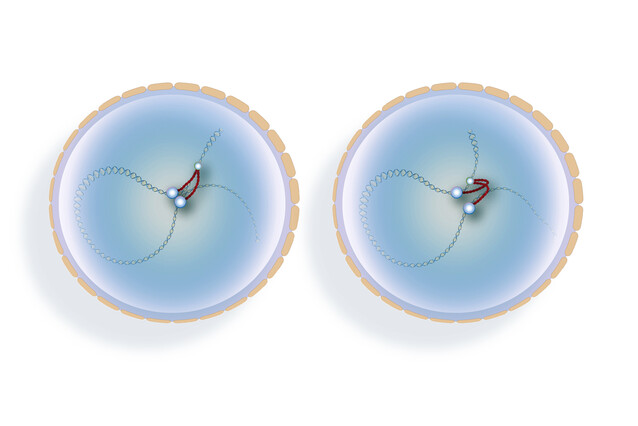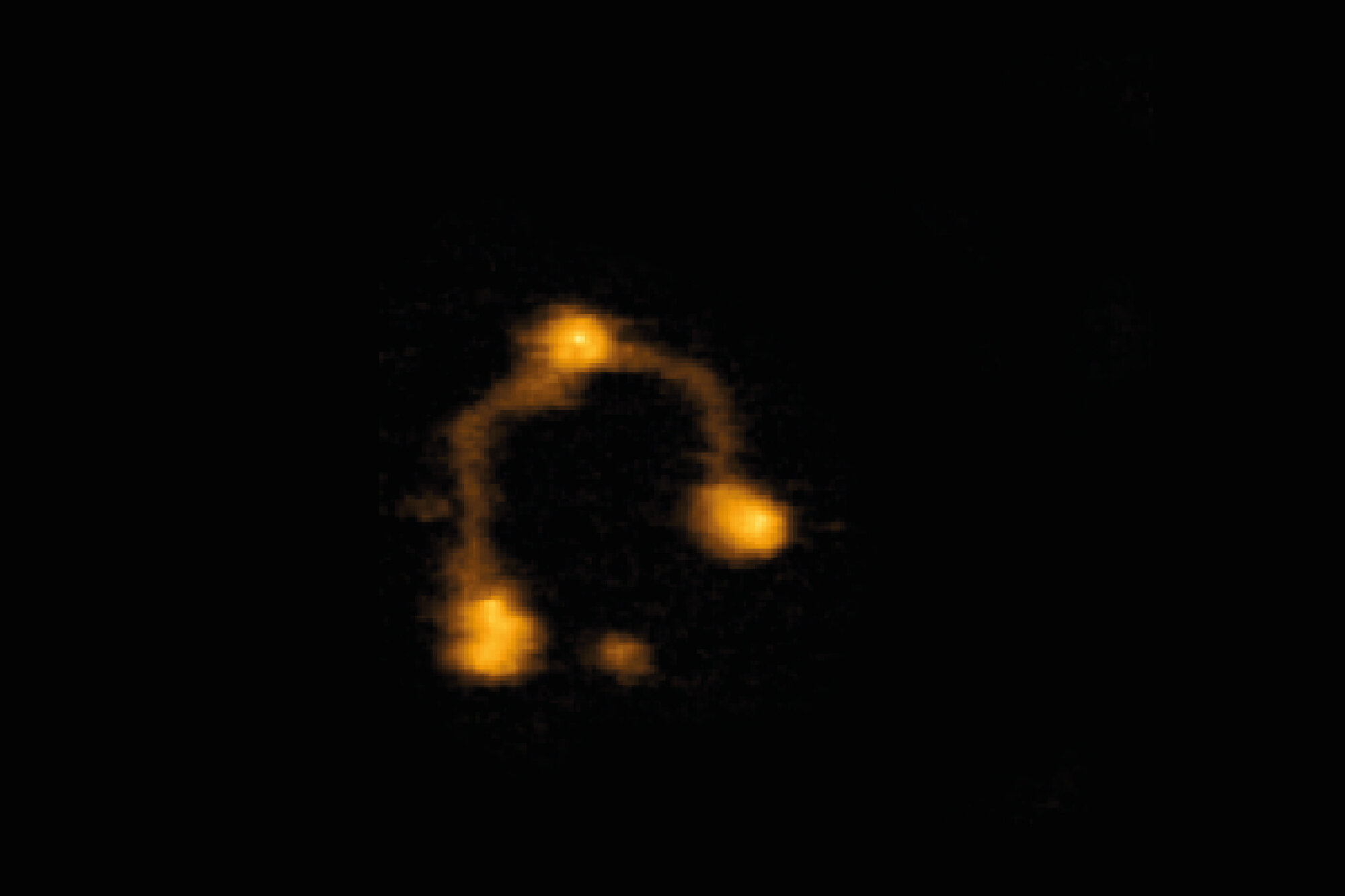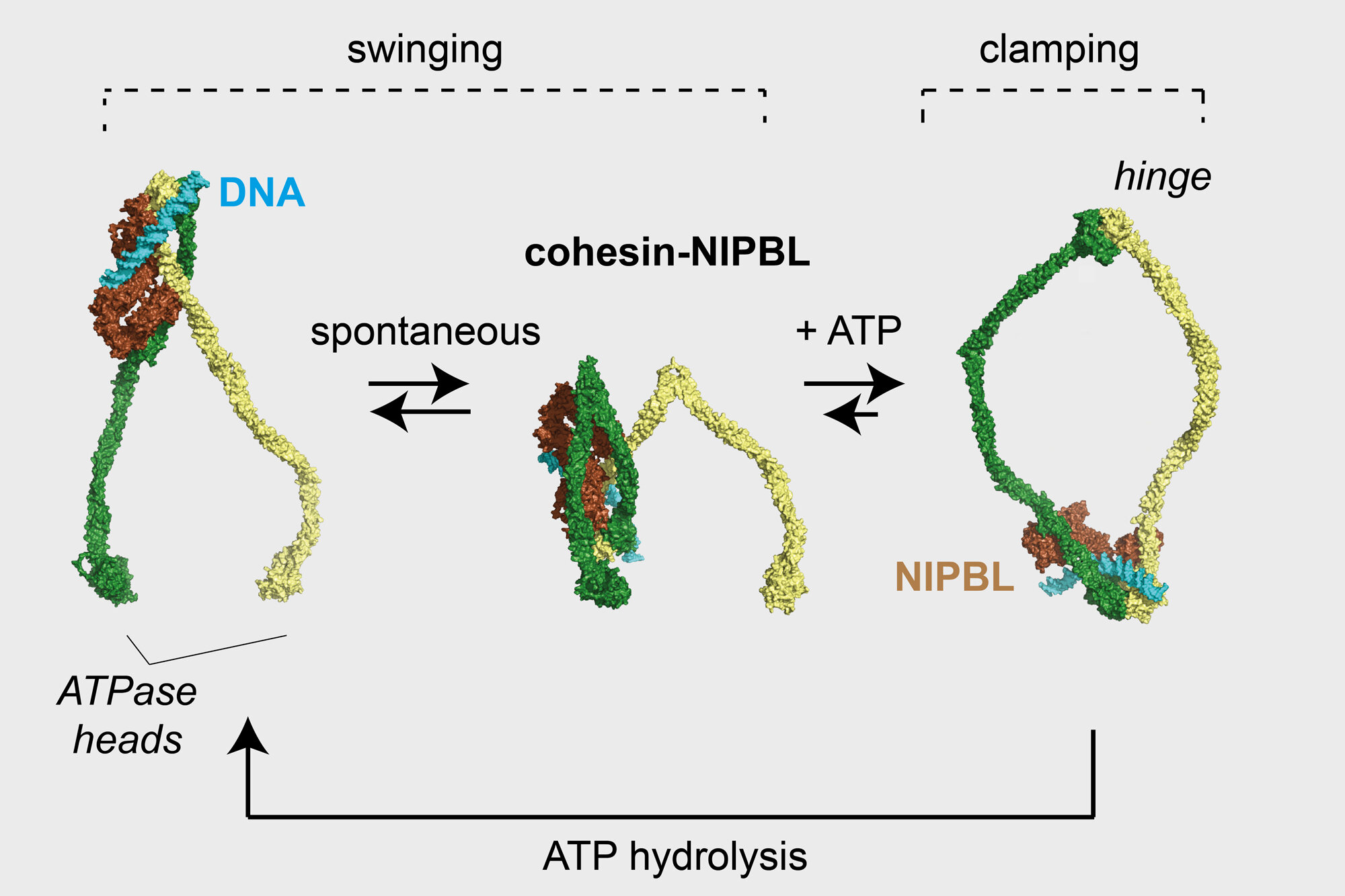Mission possible: how cohesin fits two meters of DNA into a human cell
Human cells fit extremely long DNA molecules into their microscopic nucleus. To do so, they need the help of a protein complex, cohesin, that acts like a molecular motor and actively folds DNA into loops. These loops influence how genes are expressed, with a host of effects on cellular physiology. Scientists at the IMP now provided insight into the molecular mechanism through which cohesin acts to fold DNA. Their findings are now published in the journal Cell.
Our genome holds a gargantuan amount of information – a ‘cookbook’ with all the recipes to produce RNA and the proteins that the body needs to function. Each of our cells typically contains the entire book: very long molecules of DNA, the chromosomes, which stretch over two meters when arranged end to end. If the nucleus was as big as a football, it would hold an 80-kilometre-long string of DNA.
The genomes of other organisms have reached even larger sizes. The genome of the Australian lungfish, assembled earlier this year, holds the record within the animal kingdom: it is 14 times larger than the human genome. In plants, the white-flowered Paris japonica sports a genome size 50 times that of humans – a hundred meters of DNA that must fit into each cell.
To package all this genetic material efficiently into microscopic volumes, groups of proteins called ‘structural maintenance of chromosomes’ (SMC) complexes actively fold DNA into loops. These complexes exist in all kingdoms of life, from animals to plants and bacteria, and may have evolved alongside the very first DNA genomes. However, how they go about their functions is still unclear.
Scientists in the lab of Jan-Michael Peters at the IMP have been studying the properties of cohesin, a major SMC complex in animals, plants, fungi, and protists, for years. After showing that cohesin was an active DNA-folding machine in 2019, they now report in the journal Cell the very first mechanistic insights into its workings: how it binds DNA, moves it, and folds it.
Swing and clamp: folding DNA like a climbing rope
“Cohesin works like a molecular motor that spends some of the cell’s ‘fuel’ to fold the genome, in association with a protein called NIPBL,” explains Benedikt Bauer, postdoc in the Peters Lab and first author of the study. “Cohesin reels DNA into loops in a process called loop extrusion, a bit like one would coil a long rope to fold it.”
The cohesin complex has the shape of a wishbone, with two extremities connected by a hinge. The hinge is the first point of contact to DNA, which it binds with the help of NIPBL. Cohesin then folds its arms and the hinge swings to hand DNA over to one of the extremities, where another binding site can attach to DNA. NIPBL clamps DNA to the arm’s binding site, where it remains while the hinge regains its initial position, ready to grab another section of DNA. The cycle repeats itself to continue folding DNA into loops.
“Imagine that you are folding a climbing rope – one of your arms extends to grab a distant section of the rope, and brings it to the second arm, which keeps the folded rope in a firm grip,” says Bauer. “It’s a simple mechanism, but it took years of bench work to discover it. Cohesin is a very complicated enzyme and we had to establish many principles from scratch.”
Visualising cohesin’s work has required the help of another team at the University of Linz. Peter Hinterdorfer and his lab specialise in high-speed atomic force microscopy, a cutting-edge method that was crucial to understand the mechanism of DNA folding by cohesin.
An important step to understand fundamental genetic processes
“DNA folding is an active and well-controlled process that occurs at all stages of a cell’s life cycle, in all organisms,” says Jan-Michael Peters, Scientific Director at the IMP. “Uncovering the mechanisms that underlie cohesin’s function is a point of entry to understand all other SMC complexes.”
DNA packaging was a crucial step in the evolution of large genomes and has important functions for the cell. For instance, the way DNA is folded can bring distant sections closer together that may otherwise never interact. These interactions influence when and how genes are expressed, which proteins are produced, and in what quantities – major processes that can affect health and disease.
Original Publication


